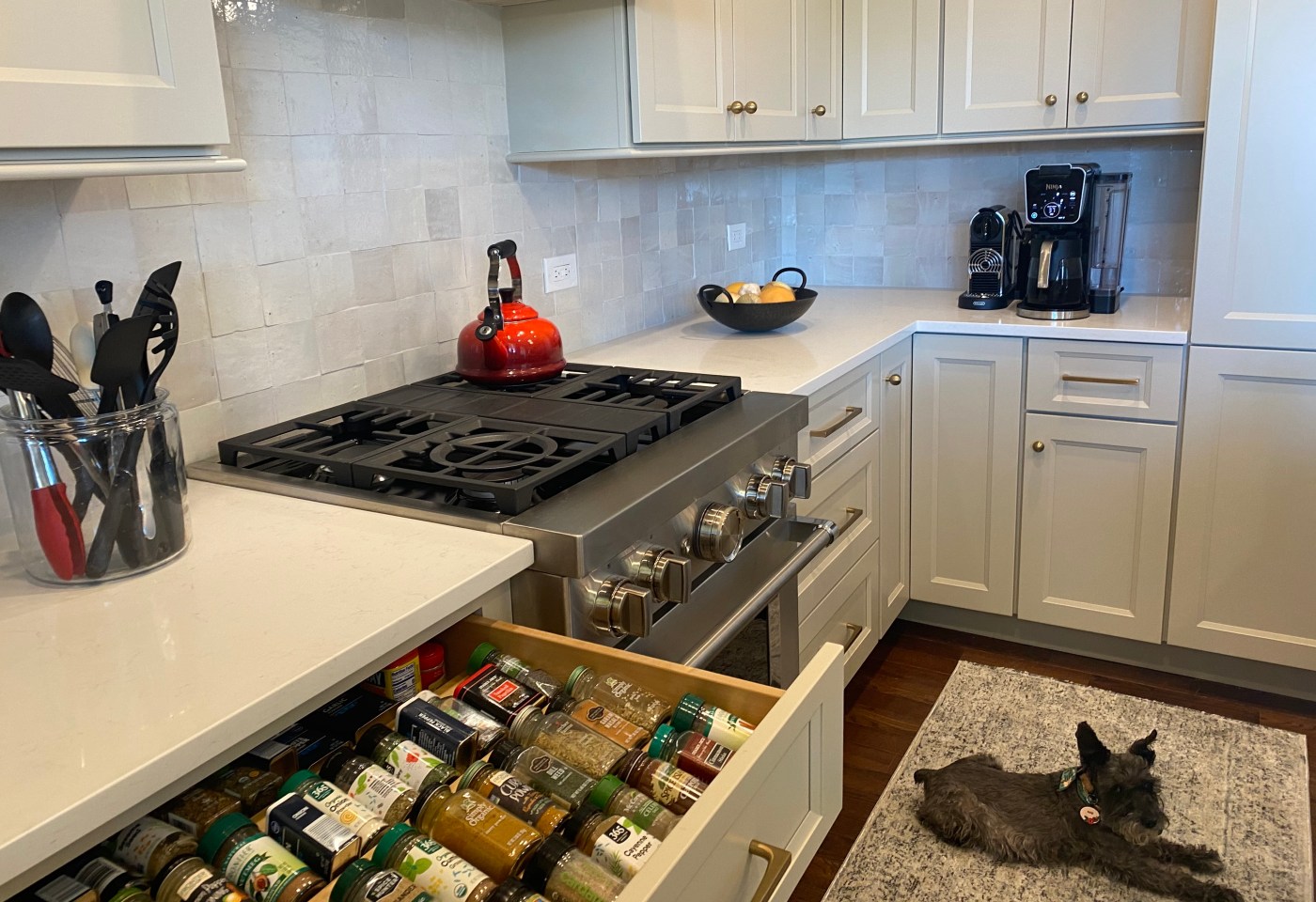When most expectant parents would be nesting, my daughter and her husband were mid-remodel. Sawdust swirled and workers buzzed while every dish, glass, pot, pan and appliance sat in the adjacent family room as if someone had tossed in a grenade.
When Baby George arrived four days ahead of schedule, Paige and Adam had just finished hurriedly moving items back in. Grateful for their beautiful new kitchen and new baby, having everything in just the right place was not a priority.
Except to me.
At the risk of being that mother-in-law (who me?), I wait until the second day of my visit to mention that I know a great kitchen organizer in the area whom I’d be happy to call
“I mean, not to meddle,” I whisper to Paige and Adam, so I don’t wake the baby. “And not to suggest you haven’t already set up your kitchen perfectly — logically! But it’s just that this organizer could suggest ways to better arrange your kitchen that could save you time.”
I regretted the presumptuous offer the minute I made it. What made me think this idea would land well? George opens his eyes, makes a small squawk. Paige and Adam look at each other, look at me and then, probably due to their profound sleep deprivation, shrug and say, “Sure!”
I met Mary Rogers, a cooking educator and kitchen organizer from Boulder, Colo., 20 years ago. I was living in Colorado and invited her to my home to get tips for one of my columns. She taught me to observe how I moved in the kitchen.
“It’s math,” Rogers said. “Taking five more seconds to get an ingredient, a bowl or utensil may not seem like much, but soon those five seconds add up to 20, then a minute; over a week it becomes 10 minutes, and in a month, an hour.” She set up my coffee station, so I could make coffee without moving my feet.
“If your kitchen isn’t efficient, you’re not going to want to cook,” she said. “If cooking is a pain, you’re not going to make healthy meals.”
After looking Paige and Adam’s kitchen over, Rogers noted how much they had gotten right on the fly. They had edited cooking supplies down to only what they used. “In most homes, decluttering is the first step,” she said. They knew what critical appliances and foods they wanted close and had put silverware, glasses and dishes near the dishwasher.
She then made the following moves to better streamline the couple’s new kitchen:
Put food where you cook. Cooking ingredients, such as oils, spices, vinegars and canned goods belong close to the stove. Paige and Adam had their spices in a drawer near the stove, but when you opened the drawer, you looked down on their lids. You had to pull each spice out to see what it was. Rogers suggested either labeling the lids or getting angled spice racks made for drawers. Paige and Adam got the racks.Arrange spices alphabetically.
Eliminate pantry treks. Seeing cooks walk back and forth to their pantry is one of Roger’s top peeves. Reserve the pantry for storing backups of condiments, canned goods, paper towels, etc., and for lesser-used serving pieces. Snacks aren’t needed for cooking, so Rogers relocated them there.
Thin the caddy. Many kitchens have a caddy to hold cooking utensils, which get crammed with gadgets cooks rarely use, Rogers said, “so when you pull out one, three more come with it.” Thin the canister so it holds only the six to 10 utensils you reach for most.
Keep dishes, glasses and flatware by the dishwasher. The second-best place is near the kitchen table, so table setting is more convenient. If you can achieve both, even better. Similarly, store dishtowels near the sink, potholders by the stove.
Clear the counters. Unless an appliance is heavily used, keep appliances off counters, especially in the cooking triangle, that busy area between sink, refrigerator and stove. The kitchen will look better, and you’ll have more room to chop and mix ingredients.
Weave in prettiness. Rogers applauds any move that makes the kitchen a place you want to be, including adding functional décor like handsome salt and pepper grinders, a beautiful fruit bowl and pretty linen dish towels.
Use bins strategically. Paige and Adam had labeled bins for flour, sugar, dog treats and nuts, but Rogers saw opportunities for more, including one under the sink for cleaning supplies. “Products are easier to access, when they live in a bin you can pull out.”
Afterward, Paige said, “I loved my new kitchen before but now it’s even better.”
Marni Jameson has written seven books, including the newly released “Rightsize Today to Create Your Best Life Tomorrow.” Reach her at marni@marnijameson.com.












